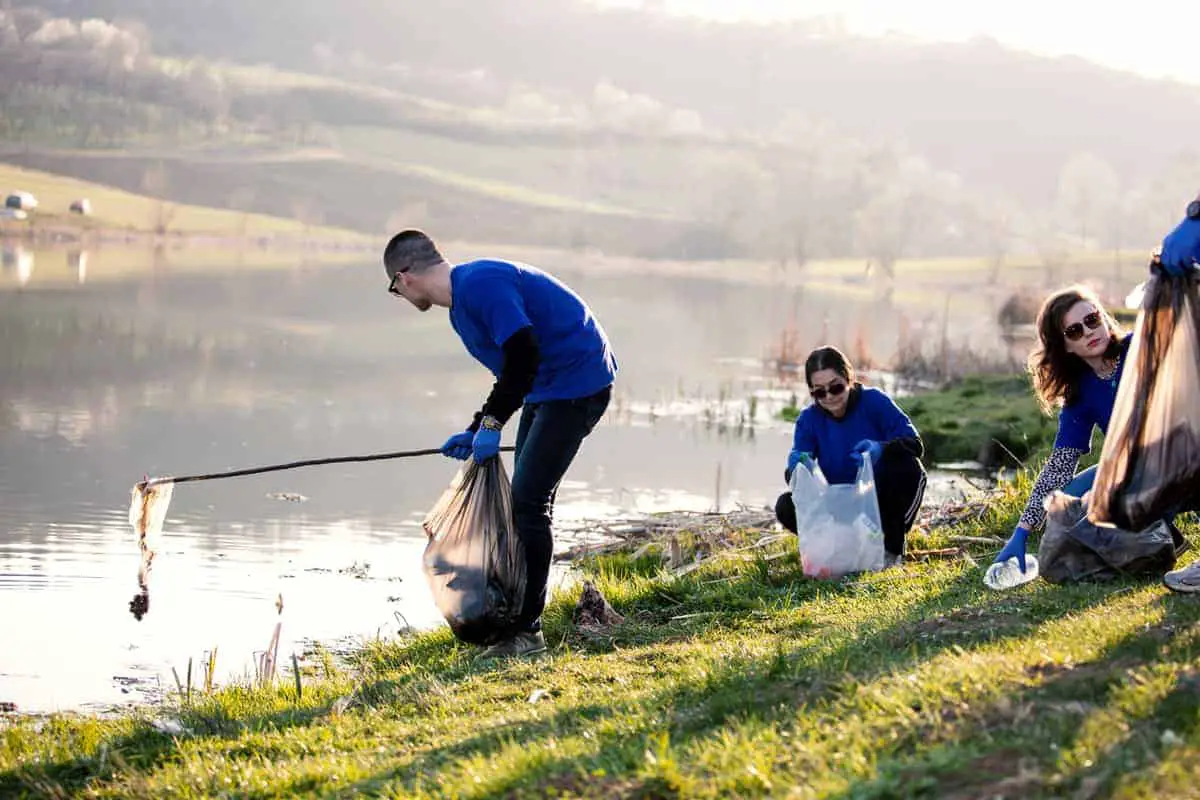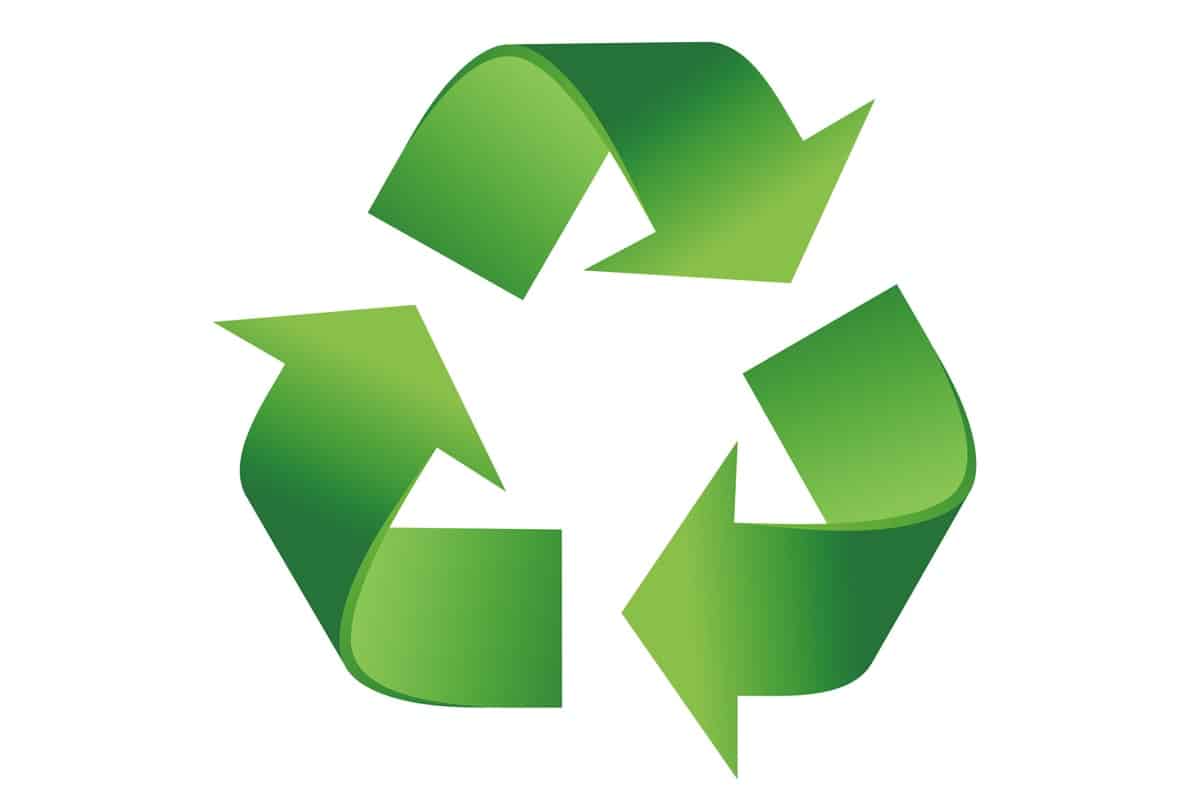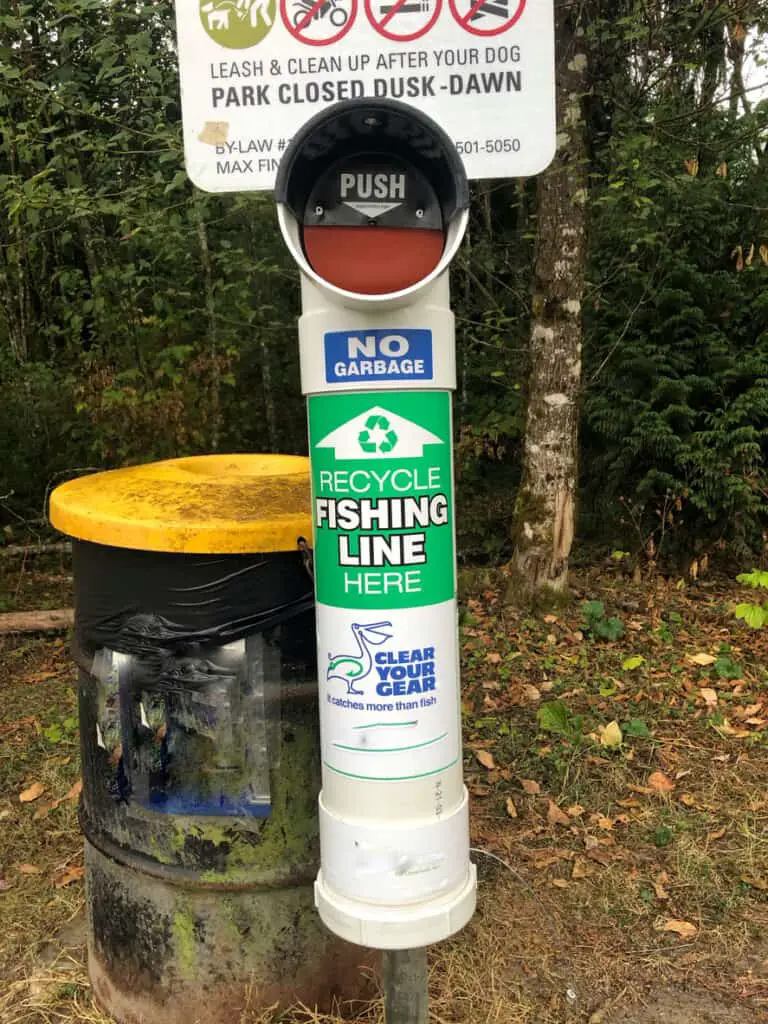It really irks me to see monofilament fishing lines tangled up in kelp, rocks, or just laying around on the shoreline as an avid outdoors person. A responsible angler would have disposed of their monofilament properly. Especially when collection bins to discard your fishing line are starting to appear more often. But what happens to the fishing line once it’s discarded?
Is it thrown into a dumpsite? Is it reused or recycled? And if it’s recycled, how exactly are monofilament fishing lines recycled?
Monofilament fishing lines are recyclable. Mono is shredded into small pieces and melted down into reusable plastic pellets. Do not mix mono with your household recycling. The recycling process is very different. Drop off mono at your local tackle shop. They can properly recycle your mono for you.
Marine waste is a serious concern for the environment. To effectively recycle monofilament lines is paramount to ensuring marine and other animals are not negatively impacted by our careless waste.
But, where do we throw our old monofilament lines? Can they be recycled anywhere? And who exactly does the recycling?

The Recycling Process Of Monofilament Fishing Line
I always find it easier to understand how something works if I know how it’s made.
Monofilament fishing lines are named due to their construction from thermoplastic material, molded into a single, untwisted strand. This is done by heating the plastic material until they melt. This mixture is pulled through (extruded) small holes forming a single strand of line.
These materials are limited in their lifespan and need to be replaced frequently. The old line needs to be disposed of correctly to prevent environmental impacts.
Where Are Monofilament Fishing Lines Recycled?
Many beaches, lakes, dams, and other water bodies have recycling bins where you can discard your old monofilament fishing lines. Another way to recycle your old monofilament line is to take it to your local tackle shop. Most tackle shops can ship fishing line in bulk to the proper recycling plants.
Before placing your mono into recycling bins or any other designated drop-off points, remove all hooks, lures, and organic material as much as possible.
These drop-off points include:
● Most bait and tackle shops.
● Many piers, boat ramps, and fishing access points (with designated bins).
● The actual processing plant where recycling takes place.
● Other areas designated by the department of wildlife and fishing/environmental affairs.
If you are not sure where to recycle some of your old fishing lines. In that case, it is worthwhile to call your local department of fish and wildlife/natural resources, as they are best informed as to who does the recycling in your area.
Unfortunately, you cannot recycle fishing lines through the same channels as household recycling.
Once collected from these recycling bins and other sources, the monofilament line is taken to various facilities, depending on your state. One such place is Berkley Recycling/Berkley Conservation Institute, a part of Pure Fishing America, located at 1900 18th Street, Spirit Lake, Iowa 51360.
How Are Monofilament Fishing Lines Recycled?
Monofilament fishing lines are manufactured out of various thermoplastics.
Thermoplastics can be reheated and melted. Thermoset plastics will not meltdown if reheated.
The type and process of recycling undertaken are dependent on the material used to manufacture the fishing lines.
Monofilament fishing lines are generally shredded and melted into plastic pellet form (mechanical recycling). These plastic pellets are then reused in the manufacturing of other plastic products.
When fishing lines are shredded and melted down, they lose a portion of their stability (the polymer chains of which they are comprised are shortened, and the material is weakened).
This loss of integrity results in a finite amount of recycling before the material becomes unusable and needs to be discarded.
Nylon Monofilament Fishing Line Recycling
Nylon-based products are generally more expensive and difficult to recycle than polyester and polyethylene.
Nylon is melted at comparably lower temperatures than glass or metal. As a result, bacteria, microbes, and other non-recyclable elements are not burnt away. For this reason, nylon needs to be meticulously cleaned before the recycling process can begin.
Although nylon is generally recycled through mechanical means, companies like Patagonia have put more impetus into chemical recycling.
The nylon is broken down into its basic components by using chemicals, while all other undesirable materials are removed. After recycling, this process leaves a greater amount of reusable nylon, with less harmful gasses released.
HDPE/HPPE Monofilament Fishing Line Recycling
High-density polyethylene, or high-performance polyethylene (PE), lines are relatively cheap and easy to recycle compared to nylon.
These lines are constructed from recycled plastic bottles, heated up, and extruded through spinnerets to create a long and strong line.
When recycling PE fishing lines, the old lines are cleaned of waste materials, impurities, and non-recyclable products.
Once cleaned, the HDPE is processed through melting and shredding to create smaller fragments, granules, and pellets. These pellets and granules are used to manufacture new products through various processes which combine and re-shape the fragments.
During their battery of tests, scientists discovered that this type of plastic could be recycled up to ten times, with each item lasting for between ten and twenty years.
Polypropylene Monofilament Fishing Line Recycling
When recycling polypropylene, they undergo a sorting and cleaning process. Once cleaned, the polypropylene is melted down at temperatures of 4 640°F inside an extruding machine. Once the plastic has melted, it is cooled and cut into smaller pellets.
These resulting pellets are used to manufacture new products.
Polyester Monofilament Fishing Line Recycling
Polyester fishing lines are recycled either mechanically or chemically.
The mechanical recycling process consists of shredding the product into fragments. Then it’s melted down, cooled, and cut to produce polyester pellets.
The chemical recycling of polyester involves adding chemicals to the plastic to break it down into its original form (basic components). The chemical recycling process is superior as it removes colourants and contaminants, restoring the polymers to an almost pristine state.
The various methods of chemically recycling polyester are:
● Glycolysis (the splitting of sugar molecules)
● Hydrolysis (the splitting of water molecules)
● Methanolysis (the splitting of methyl alcohol molecules)
Each of these methods produces a different type of monomer/oligomer (the basic construction unit). These simple compounds are then converted into polymers (complex chemical chains) to create new materials.
Some benefits of chemical recycling include:
● The end product created is higher quality (almost as good as a new product)
● The colour and performance are also improved
● When using glycolysis, there is a reduction in carbon dioxide emissions by up to 35% compared to manufacturing “new” polyester.

The Industry-Wide Monofilament Recovery And Recycling Program
Across the USA, a long-running monofilament recycling program is in operation.
This program’s primary function is to construct and install monofilament recycling bins nationwide. This function includes the maintenance and emptying of the bins as well.
Most states have their version of this program, but the structure is more or less the same. Recycling bins are erected at various water bodies, popular among anglers.
Volunteers and employees empty the bins monthly and then sort and compile the monofilament line for recycling.
Depending on the state will determine where the monofilament ends up being recycled.
Another critical component of the program’s work is to educate the public on the importance of recycling monofilament fishing lines, the impacts of not recycling, and how they are recycled.
The Importance Of Recycling Fishing Lines
Nylon monofilament fishing line is believed to last for up to 600 years without decomposing (particularly in a marine environment). Other types of monofilament fishing lines, like polypropylene, last for 20 – 30 years before decomposing.
Nylon accounts for around 10% of all ocean waste. The biggest contributor to this is the more than 600 000 tons of fishing nets, and other tackle dumped into the ocean annually.
There are many associated issues with monofilament fishing lines left in the environment. Some of these issues include:
● Ghost fishing and entanglement. Fish, seals, birds, dolphins, and even humans can be tangled up in discarded fishing lines. These lines cut off circulation, resulting in amputation, septicemia, and death.
Fishing lines also become entangled in boats’ propellers, resulting in damage to the vessels and any sea life passing by.
● Ingestion. When left in aquatic environments or dumped in landfill sites, monofilament lines are often eaten by birds and other animals. Once ingested, the animals struggle to digest/pass the fishing lines through their system, often resulting in the animals starving as their stomach becomes blocked.

Monofilament Recycling Bins
Have you ever walked past random-looking PVC pipes sticking up like periscopes at the beach or lake? Well, no strange people are hiding under the sand (that we know of at any rate). These weird contraptions are recycling bins for leftover monofilament (and fluorocarbon) fishing lines.
These bins are part of the greater drive to recycle marine waste by reducing the number of old fishing lines left on beaches and other water bodies.
They are placed at entrances and exits of popular fishing areas, like walkways, piers, and docks, in the hopes of appealing to anglers’ better natures to clean up after themselves.
Some of the benefits these bins provide are:
● They serve as a convenient collection point for anglers to dispose of their old, unwanted monofilament fishing lines.
● These discarded fishing lines are contained within these bins until they are collected for recycling. Preventing old fishing lines from being blown across beaches and back in water bodies.
● Sea birds and other wildlife have limited access by containing the decrepit fishing lines. This prohibition of access is also due to the shape and dimensions of the bin itself. It would have to be a highly determined bird to poke its head through a 90 degree angled PVC pipe to get at the fishing line below.
Building Your Own Monofilament Fishing Line Recycling Bins
If you’ve noticed lots of old fishing lines washing up onto the beach, it may be a good idea to build some fishing line recycling bins. They are easy to make and can create a world of difference.
If you would like to build a recycling bin, you will need the following materials:
● 1x straight PVC pipe. This pipe should be roughly 3.28 feet long.
● 1x 90-degree elbow joint
● 2x end caps (one male part and one female part)
● Glue/PVC cement
The diameter of the pipe is not too much of an issue. The greater the diameter, the more fishing line it can hold. A good size is around 6 inches in diameter.
The critical part to remember is that the elbow joint, pipe, and endcap must be compatible, so whatever size you decide, make sure that all the pieces fit together.
The method to follow when constructing these bins is:
● Drill four holes into the male part of the end cap (plug) and screw it into the female portion.
● Next, attach the end cap unit to one end of the straight PVC pipe. The female part should be attached with the adhesive, while the male part should be screwed in by hand.
● You can now attach the 90-degree elbow joint with adhesive (although not entirely necessary, it will prevent accidental opening on the bin) on the other side of the pipe.
Here is a YouTube video by FWC Saltwater Fishing on making a recycling bin.
The most crucial element is getting the community’s buy-in. You don’t want this to be only your project but a project for the community to take part in.
Speaking to a Berkley representative at the local tackle shop is a great idea to set up a collection point for the old fishing line to be taken for recycling.
What Can Recycled Monofilament Be Repurposed For?
Once a monofilament fishing line has reached the end of its usefulness, it is melted down into plastic pellets.
Recycled pellets are used in the manufacturing of:
● Tackle boxes
● Spools for fishing line
● Fish habitats
● Toys
● Skateboards
● Sunglasses, among other things
Although an expired monofilament line is used to construct various items, it’s not used to make more fishing lines.
The Leaders When It Comes To Recycling Monofilament Fishing Line
With the various drives around the US to recycle monofilament fishing lines, there are some industry leaders whose names pop out above the rest. Some of these leaders include:
Berkley Conservation Institution
Berkley is a part of Pure Fishing America. They are by far the most well-known leaders in recycling monofilament fishing lines. Most tackle shops, boat ramps, and piers sport a Berkley collection bin for old monolines, which are collected, sorted, and processed to be reused.
Berkley began their recycling program in 1990, and since its inception, has collected more than nine million miles of fishing line.
Bureo
Bureo, a Los Angeles-based company that pays Chilean anglers to collect old nylon from fishing nets, recycles these nets to produce skateboards and sunglasses. By empowering the community, they uplift the local anglers and have their buy-in in cleaning up fishing grounds.
Aquafil
Many people are discovering the Italian manufacturer’s flagship product Econyl.
Using nylon waste from landfill sites and marine waste, Econyl is produced through a closed-loop process, which greatly increases the recyclability of nylon.
Compared to manufacturing “new nylon,” Econyl uses around 50% less energy and produces approximately 50% less carbon dioxide waste.
Happy Fishing & Tight Lines
